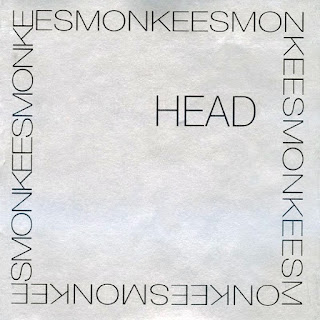Riz Ortolani: Cannibal Holocaust OST (Mondo)
I think I bought this through mail order through Mondo.
It seems like a running theme or even joke in this blog, me sitting down with a soundtrack album to a film I haven't even seen. I have watched the trailer, and the film looks like an extremely nasty bit of business.
I don't object to films being weird, or even violent at times. Cruelty and torture are a different story. I have noted that I've previously blogged about the soundtrack albums for Cannibal Ferox (which I also haven't watched) and Cannibal Apocalypse (which I have). In the latter's case, "cannibal" is overstated, even if the theme of the film is soldiers returning from Viet Nam carrying a disease that gives them a sometimes insatiable desire to bite into fresh human flesh. Okay, I admit it's a rough one. The title was no doubt meant to trade in on the notoriety of the other two films, in great exploitation fashion. It's the only film starring John Saxon (whose credits include Black Christmas, Enter the Dragon, Tenebrae) the actor disowned.
I'm definitely interested in the history of Britain's Video Nasties panic. Spearheaded by Mary Whitehouse, an outspoken hyper-conservative activist, it was an attempt to officially ban VHS titles deemed irredeemably violent and offensive. It made splashy headlines the way that the Heavy Metal backlash and Satanic Panic did in the US. And I don't mean to sound as though I am defending Whitehouse and her group, but video rental stores were popping up everywhere without any regulation. 12 year olds could walk to the corner store and rent Cannibal Holocaust or Faces of Death. Maybe a little oversight would have been appropriate, at least something similar to the US' MPAA ratings.
Though really, teens seem to be able to handle most horror movies just fine without psychological trauma, so what do I know. Anything with the word "cannibal" made the Nasties list, regardless of content.
As its own listening experience, Ortolani's score is a bizarre and sometimes even laughable experience. It opens, with "Cannibal Holocaust (Main Theme)", an Italian folky-pop ballad I suppose you could say. Wordless vocals bring Morricone to mind. The second cut, ""Adultress' Punishment" (already suggesting more exploitation themes) begins with the grimiest synth sound imaginable, leading to semi-tonal lines for studio strings. Again, the comparison to Morricone is undeniable, plus that Moog or Arp or Korg synth sound so prevalent in other Italian soundtracks of the time. And more that whatever particular synth was being used, there's a Space Drum or some sort of synthesized that gets hit over and over in the latter half of side one.
"We paid for the damned Space Drum and by God you're going to hit that thing!" At least that's what I imagine someone yelling.
Things dart around from track to track: light poppy funk, nasty synth, quasi-tonal strings, returns to the saccharine opening theme. Sounds like an Italian horror soundtrack to me, or at least one type.
It is amazing that this low budget Italian vomit inducer could have the budget for a studio band with string orchestra. The Italian film industry must have been receiving its strongest support at the time. Dario Argento has complained in more recent years just how impossible it is to get anything funded in Italy anymore.
I hate the idea of any country producing films should see its industry falter. There was a small but bona fide Mexican film industry for example, which I believe is essentially a thing of the past. Even if it means cranking out movies like this, some of the time.












